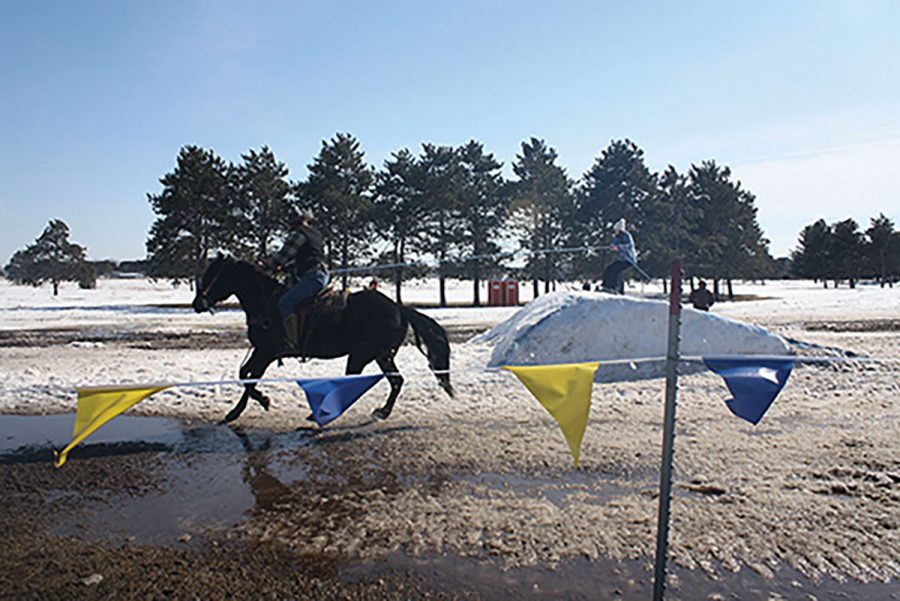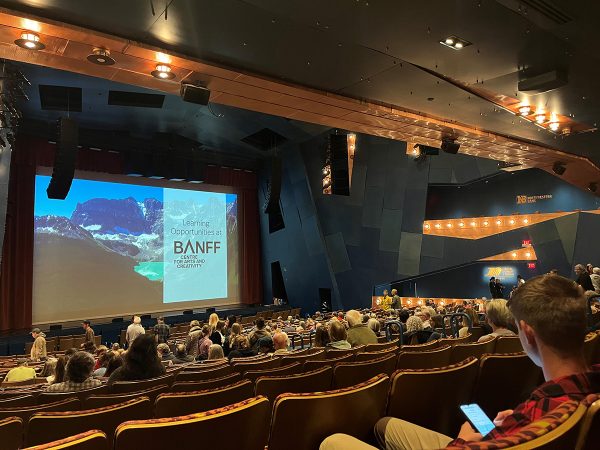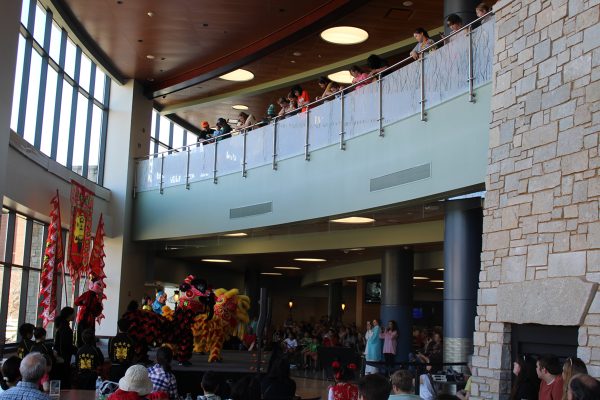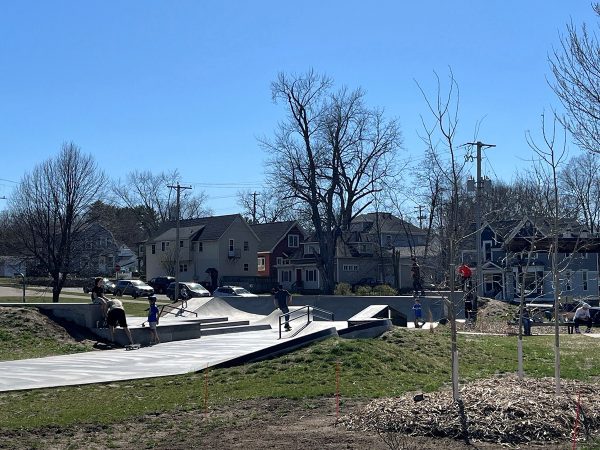Second annual Spurs and Skis: Skijoring Stampede held in Rice Lake
Norwegian winter sport combines horseback riding and skiing
Photo by Morgan Burke
Skijoring, which is derived from the Norwegian word “ski driving,” originated back when animals were still used as a basic form of transportation. The event involves a skier, rider and a horse.
The flag drops and the horse serges forward, cantering through the late-winter snow. The horse’s rider looks over his shoulder, checking the rope attached to the saddle. At the other end of the rope is a skier, wearing jeans and an old winter jacket.
This is skijoring, a Norweigan winter sport where a skier is pulled by a horse (or a group of dogs or a motor vehicle) through a timed obstacle course. Last Saturday’s second annual Spurs and Skis: Skijoring Stampede was held on UW-Eau Claire’s Baron County campus.
The skier maneuvered the first obstacles of the course well, gliding in and out of the posts. The first jump of the track approached. The skier choked up on the rope and flailed over the mound of snow, gaining a moment of air before sticking a questionable landing.
The crowd cheered from their lawn chairs, happy to see a successful jump. Then, the horse and skier approached the second jump. The skier caught more air this time. When they landed, the tips of their skis caught in the snow. They face planted into the slush, soaking their jeans. The crowd was audibly disappointed but quickly turned its attention to the next team at the start line.
Though most skijoring competitions take place in western states like Colorado and Montana, there are a handful of events sprinkled throughout the Midwest. Shane Jorgenson established Spurs and Skis last year.
“I always wanted to bring (skijoring) back home,” Jorgenson said.
Jorgenson grew up in Wisconsin but often traveled to Montana for skijoring competitions. At one point during Jorgenson’s 10 to 12 years as a competitor, he was ranked fifth in the world.
Based on the number of events popping up around the state, Jorgenson said interest in the adrenaline-filled sport is growing.
“I think it’s going to be something that really takes off,” Jorgenson said.
Racers typically choose between open, novice, youth, snowboard and freestyle categories. Obstacles vary by course. Saturday’s setup included a couple slalom portions and a few jumps. Other races have rings for skiier to grab.
Winners of Saturday’s race recorded the fastest times on the course. Skiers had to cross the finish line holding the rope still attached to the horse.
At the top of the open category were Jesse Kier and DJ Sagendore. They received $500 as a prize.
Henry Kutrieb, who is a junior at Chetek High School, watched the first round of competition as he ate a gyro. An emerald peacoat, neon purple turtleneck and pastel pink pants distinguished him from the rest of his chaps-wearing competitors.
Kutrieb said he decided to enter the competition to beat a friend. The competition was his first — he’d never practiced skijoring and doesn’t own a horse. Kutrieb came to the event and told the organizers about his situation.
A few hours later, Kutrieb was at Goodwill looking for his race day outfit. He received a call from the race organizers, who told him someone volunteered to pull him behind their horse.
Kutrieb said he wasn’t scared for his debut because he’s downhill skied at least 40 times this season.
“I don’t want to get this outfit wet,” Kutrieb said.
Kutrieb almost made it to the finish line. He cleared the jumps but let go of the rope before crossing the finish line. His outfit did not get wet.
Brenda Posusta and Larry Caswel from Darwin, Minn., donned a Western look to support Posusta’s granddaughter, Mickenzie Huggett, on Saturday. They wore matching hide chaps and 10-gallon hats.
Caswel said he trains Huggett and skier Zeb Gorres by setting up an obstacle course in his backyard. For a team to be successful, Caswel said, equipment has to work, the horse has to be calm and the skier must perform well. Thanks to Gorres’ skiing skills, Caswel’s team got the hang of skijoring in a few weeks’ time.
If it isn’t obvious, skijoring can be dangerous. However, Jorgenson said there weren’t any serious injuries last Saturday. Posusta said the sport takes courage.
“You have to be a little crazy,” Posusta said, “and have no fear.”
Neupert can be reached at [email protected].

Neupert is a fourth-year journalism student at UW-Eau Claire. She is the executive producer of Engage Eau Claire on Blugold Radio Sunday. In her spare time, Neupert's working on becoming a crossword puzzle expert.

Morgan Burke is a fourth-year photography and multimedia communications student. This is her fourth semester on The Spectator, and first as Multimedia Editor. In her free time, she loves to make hyper-specific Spotify playlists and eat avocado toast.










